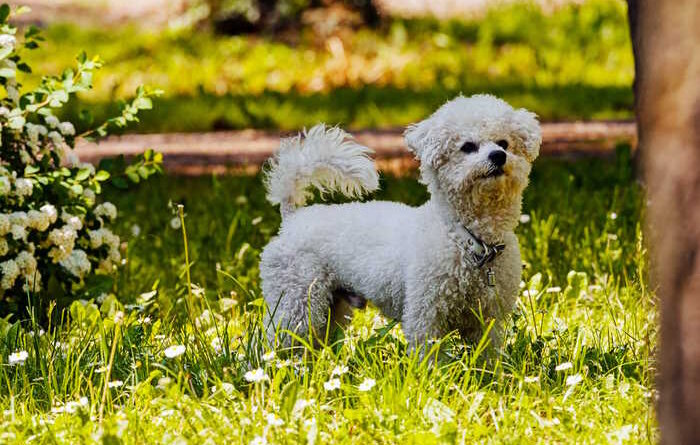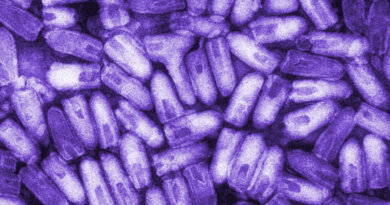10 Tips for Dog-Proofing Your Backyard for a Small Dog
Dog Proofing Your Backyard. |Published 10-12-2023
To your small dog, your backyard can be a gateway to adventure and excitement. Backyard time promotes exercise and mental stimulation, boosting your dog’s overall quality of life. That said, hidden dangers can lurk within your yard. To keep your precious pup safe, take a little time to dog-proof your backyard. The effort will be well worth the peace of mind.
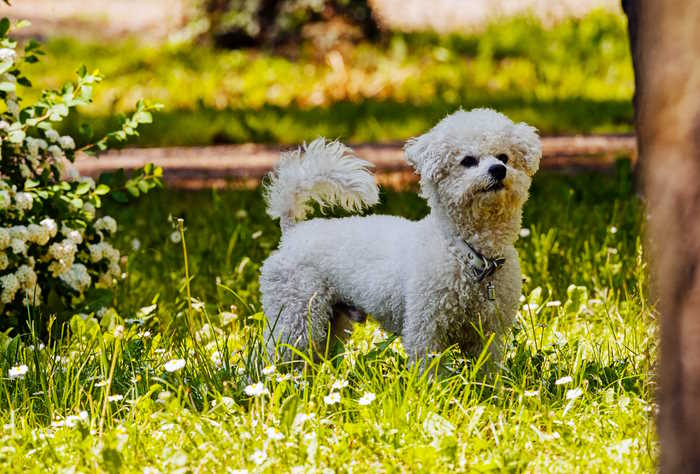 Dog Proofing Your Backyard
Dog Proofing Your BackyardDog Proofing Your Backyard for Your Small Dog
Here are 10 tips on how to create a dog-friendly backyard for your small dog or puppy.
1. Create an Enclosed Area for Your Dog
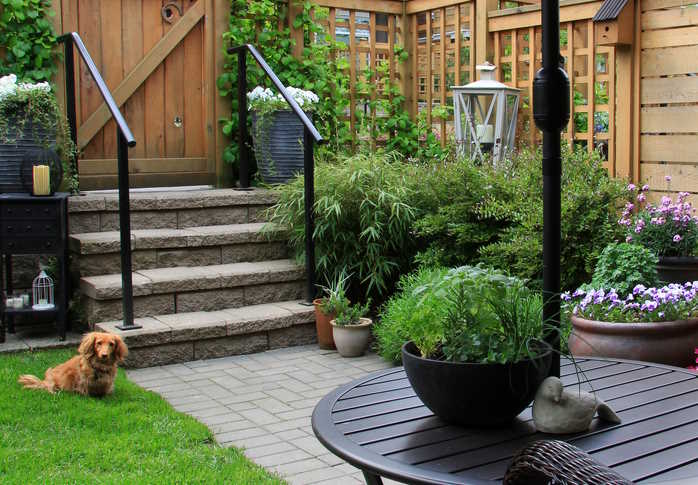 Create an Enclosed Area for Your Dog
Create an Enclosed Area for Your DogThe most important way to keep your small dog safe outside is to put up a physical or electric fence around your yard. Even if your small dog doesn’t show a propensity for running, you never know when they might decide to chase a squirrel or get scared by a loud noise.
If you have a large property, consider fencing off a specific area for your dog. Choose a barrier your dog can’t squeeze through: Small dogs can be miniature Houdinis and wiggle through small gaps when they want to.
If you already have a fence on your property, check it for loose boards, broken gate hatches, or gaps, and fix any issues as soon as you can.
2. Put a Barrier Around Your Pool
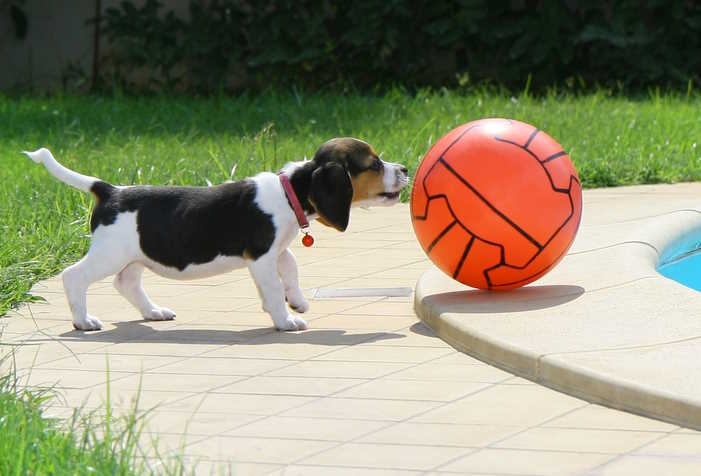 Put a Barrier Around Your Pool
Put a Barrier Around Your PoolBelieve it or not, some dogs have trouble swimming or tend to sink in water. This is especially true for certain smaller breeds, like:
If you have a pool, invest in a pool fence or a barrier so your curious pup doesn’t end up in the water when your back is turned.
3. Be Careful What You Plant in Your Garden
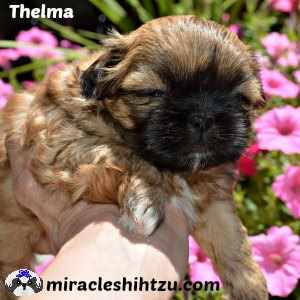 Be Careful What You Plant in Your Garden
Be Careful What You Plant in Your GardenA garden can add beauty and character to your property, but certain common garden plants can be toxic to dogs. Before you add anything to your garden, check that it’s safe for your pooch. The ASPCA provides an extensive list of plants that are poisonous to dogs.
Some of the most common no-no plants include:
- Daffodils
- Lilies
- Wisteria
- Sago palm
- Daisies
- Oleander
- Rhododendron
- Aloe
- Tulips
Learn more about how to build a dog-friendly garden.
More Information About Plants that are Toxic to Dogs.
5. Dog Proofing Your Backyard: Avoid Cocoa Mulch
Adding mulch to your garden and trees can protect your plants’ health and add to your property’s aesthetics. Mulches come in many varieties, including shredded pine bar, cedar bark, and hemlock bark. Most types of mulch are harmless unless your dog swallows the mulch, which can lead to a foreign body obstruction.
Otherwise, the primary mulch to avoid is cocoa mulch, which is made from the shells or hulls of the cocoa bean. Cocoa mulch contains a small amount of theobromine, the ingredient that makes chocolate so dangerous to canines. If ingested in adequate quantities (which might not be much for a small dog), coca mulch can be harmful to your dog.
6. Provide Shade and Water in Your Yard
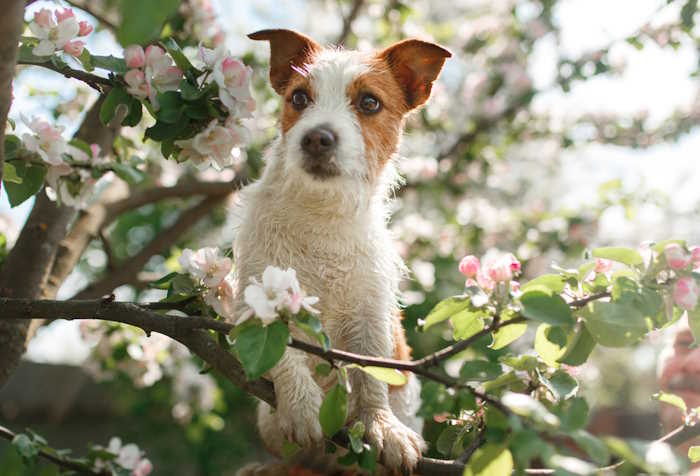 Provide Shade and Water in Your Yard
Provide Shade and Water in Your YardTo help your dog beat the heat, make sure there are shaded areas in your yard, and always have clean water available. It’s also best to limit outdoor time during the hotter seasons.
Dogs get rid of heat through panting, which is far less efficient than sweating. When temperatures climb, dogs can quickly overheat. Brachycephalic dogs — pooches with flat faces and shorter muzzles — can be especially heat-sensitive. So keep an extra close eye on your pug or bulldog when the temperatures climb.
7. Provide a Cozy Place To Get Out of the Cold
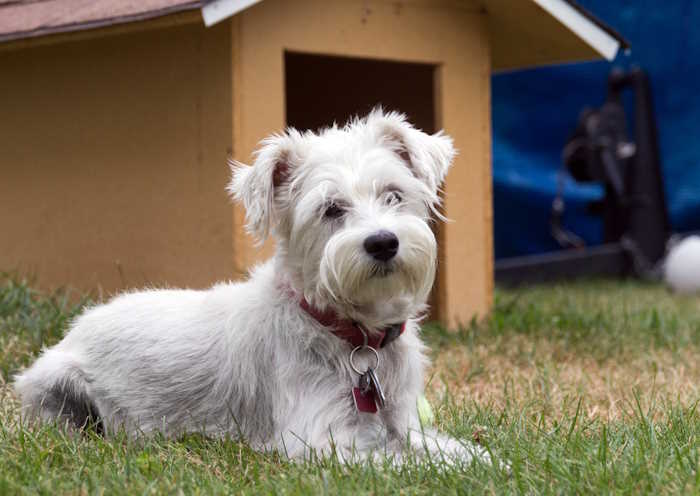 Dog Proofing Your Backyard
Dog Proofing Your BackyardMany smaller dogs tend to spend most of their time indoors, but if your pet prefers being outside, ensure they have a place to keep warm during the winter. Temperatures can drop fast, and most small dogs don’t have an extra-warm double-coat like golden retrievers, huskies, and Newfoundlands.
Put a small dog house in your backyard and add blankets or mats to the bottom to keep your dog cozy. If you can, put the dog house on blocks or pavers to keep it off the ground. If the weather gets extra icy, add a flap door to keep out the chilly air. Don’t leave small dogs outside in the cold for too long, and never leave them outside overnight.
4. Use Fertilizers That Are Safe for Your Dog
Older forms of fertilizer often contained iron, carbamates, and organophosphates, which are harmful to dogs. These days, the EPA has limited these fertilizers, so you aren’t likely to find them at your local home and garden store. However, if you do come across fertilizers with these ingredients, avoid putting them in your yard.
Some popular organic fertilizers, like bone meal, blood meal, and fish meal, aren’t inherently dangerous in small quantities, but dogs tend to be highly attracted to them. (Who could turn up their snout at bone meal?) If your pup gets into a bag, they could overeat, leading to vomiting, diarrhea, foreign body obstruction, or pancreatitis, so If you do use these fertilizers, keep them out of your dog’s reach.
8. Use Pet-Safe Pesticides
No one wants ugly weeds or destructive insects and critters to take over their yard, but pesticides can also harm your dog. According to PetMD, pesticides are among the top 10 toxicities reported by the ASPCA Animal Poison Control Center.
Pesticides represent a huge array of products and include herbicides, insecticides, rodenticides, fungicides, and more. Always check the labels of any products you buy to determine if they’re safe for pets. In some cases, you may simply need to keep your pet off the lawn after applying a pesticide until the pesticide has fully dried or been washed away by the rain.
9. Keep Harmful Materials Stored Away
As we’ve seen with pesticides and even some fertilizers, the materials you use on your lawn can be harmful to your dog. Other common compounds you might keep on your property, like antifreeze and rock salt, can also be dangerous. Small dogs, in particular, don’t need to ingest a lot of harmful substances to get sick.
The best way to protect your dog from these materials is to store them away properly. Keep chemical compounds up high on shelves in your garage or in a latched storage shed. You can also put gardening supplies in latched storage boxes on your patio. Here are a few more backyard storage ideas.
10. Keep an Eye on Your Pet
The simple truth is that no matter how well you try to create a dog-friendly backyard, your pooch will test the limits of your dog-proofing. As much as possible, supervise your pet’s outdoor play. This may be easier if you have a small dog, as they don’t often spend as much time outdoors as larger ones.
Always make sure your dog wears a collar with updated contact information, and don’t forget to update your dog’s ID chip information whenever you move.
Dog-Proofing Is About Lowering Risk and Keeping Your Small Dog Safe
While you’ll never be able to fully dog-proof your backyard, these 10 tips can help you lower the risk of your dog becoming injured, getting sick, or escaping. A dog-friendly backyard will give you peace of mind and allow you to spend more quality time with your precious pup in a safe environment.
Conclusion
In conclusion, dog proofing or puppy proofing your backyard is an absolute must for any pet owner. It not only ensures the safety and well-being of your furry friend, but also provides peace of mind for you as the pet parent.
By taking the necessary steps to dog proof your backyard, such as securing fences, removing toxic plants, and providing ample shade and water, you create a safe and enjoyable space for your dog to explore and play.
Remember, prevention is key when it comes to keeping your dog out of harm’s way. So, take the time to assess your backyard for any potential dangers and make the necessary adjustments to create a dog-friendly environment. Your furry companion will thank you for it!
To reiterate, dog proofing or puppy proofing your backyard is not only beneficial for your dog’s safety, but also for their overall happiness and well-being.
By implementing simple measures like reinforcing fences, installing secure gates, and removing any potentially harmful objects or plants, you can create a haven for your four-legged friend. Additionally, providing ample shade, water, and toys will keep them entertained and engaged in a safe environment.
Remember that dogs are curious creatures, and it is our responsibility as pet owners to ensure that they are protected from any potential hazards in their surroundings. So, take the time to dog proof your backyard today and enjoy countless hours of worry-free playtime with your beloved pup!
Does This Article Deserve Your Thumbs Up?
We always appreciate your support and encouragement. Your thumbs up means so much to us. Please like this article.
If you find this page or any page on Small Dog Place Helpful, or useful in anyway, I’d love it if you would click the small heart found on the bottom right of each page.
You can also share or bookmark this page — just click on the:
Your second block of text…

Free Monthly Newsletter
Sign Up for Our Free Newsletter and get our Free Gift to You.
my E-book, The Top 10 Mistakes People Make When Choosing a Dog (and how to avoid them)

